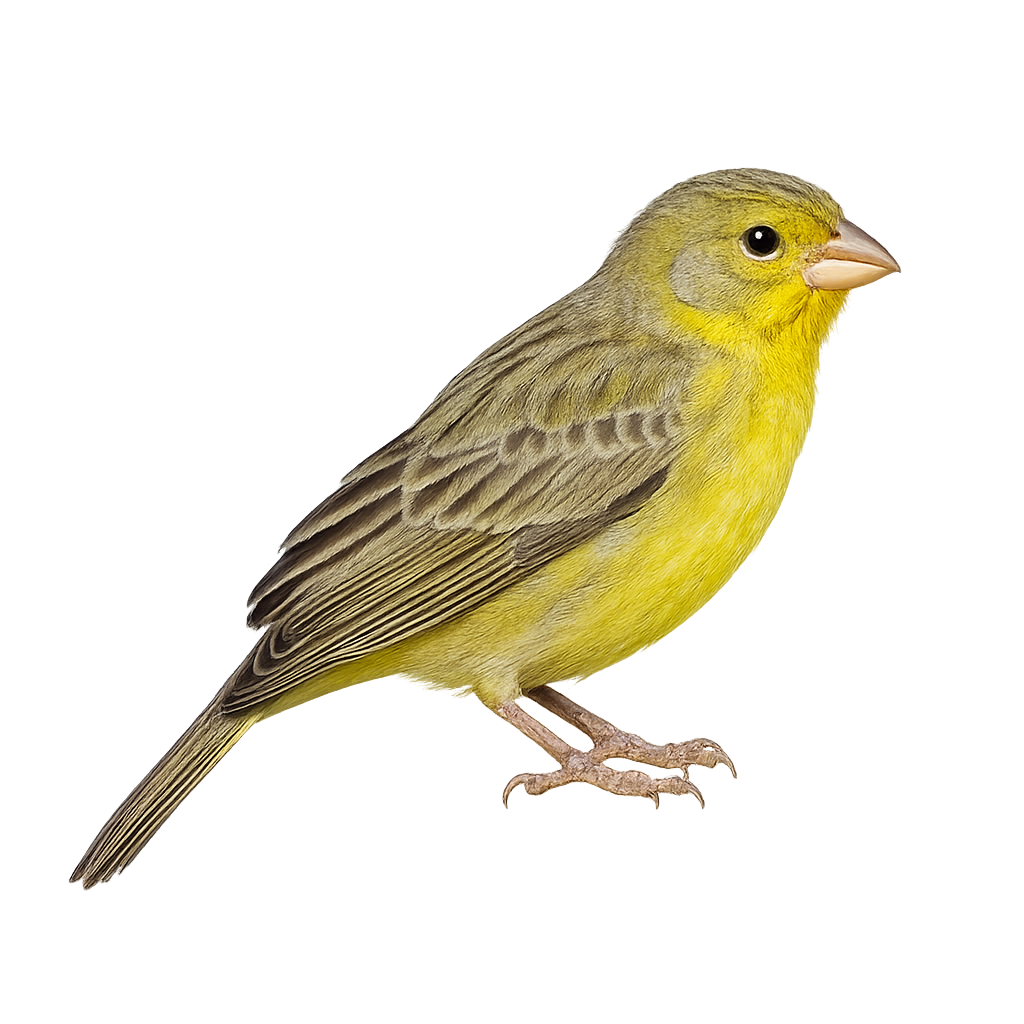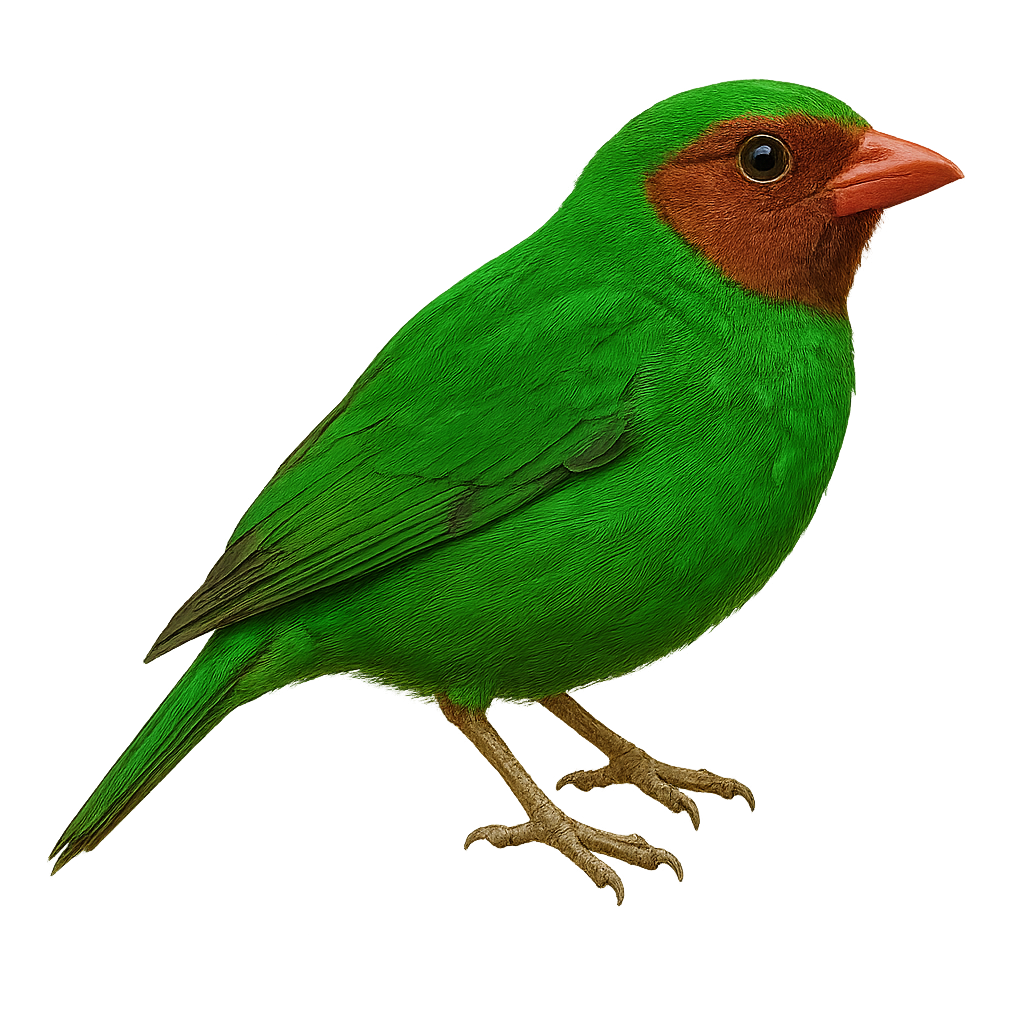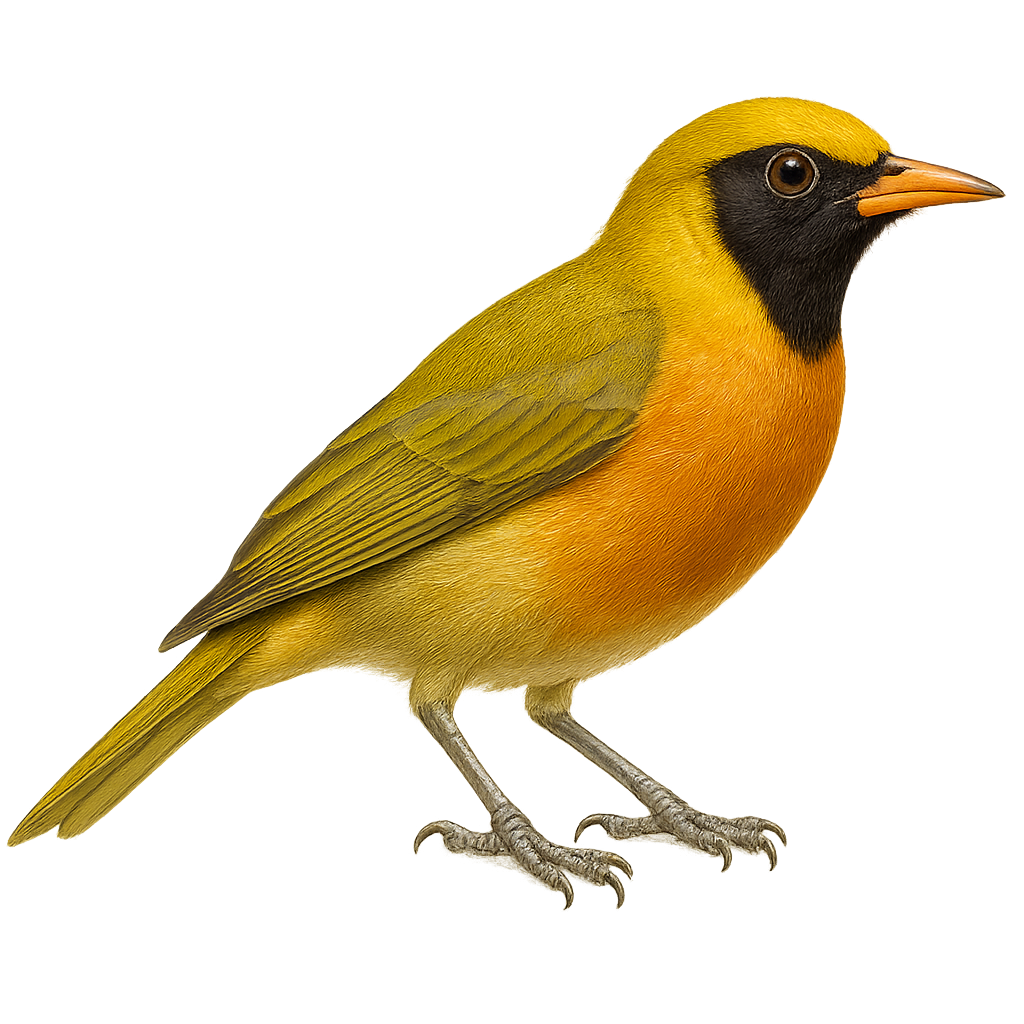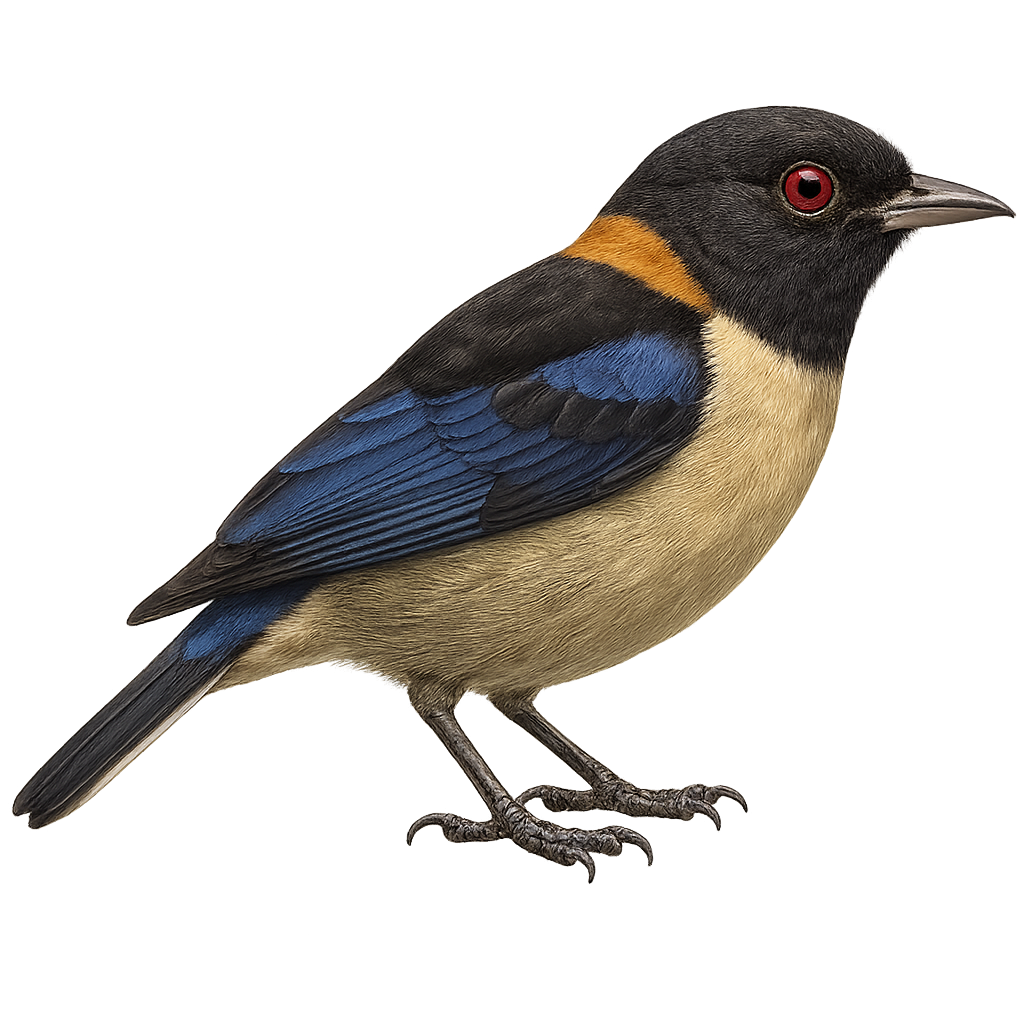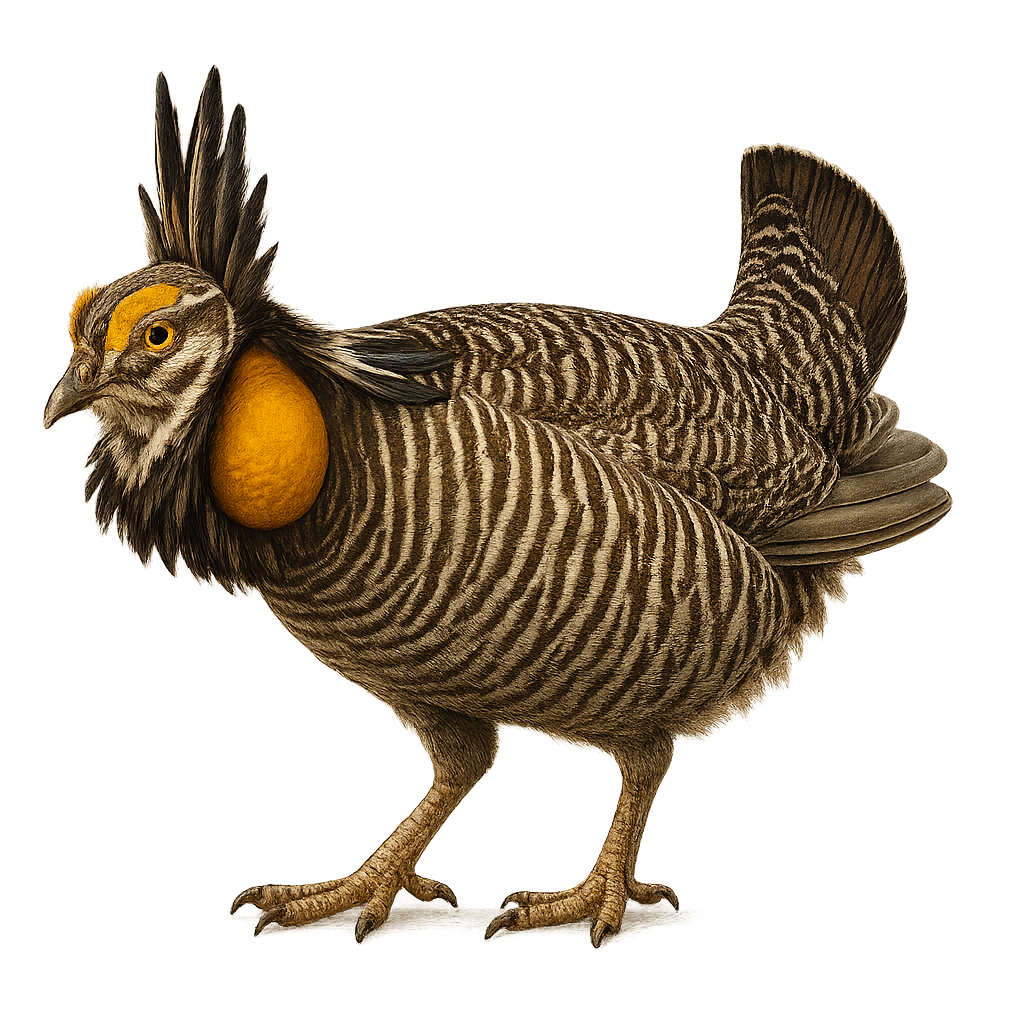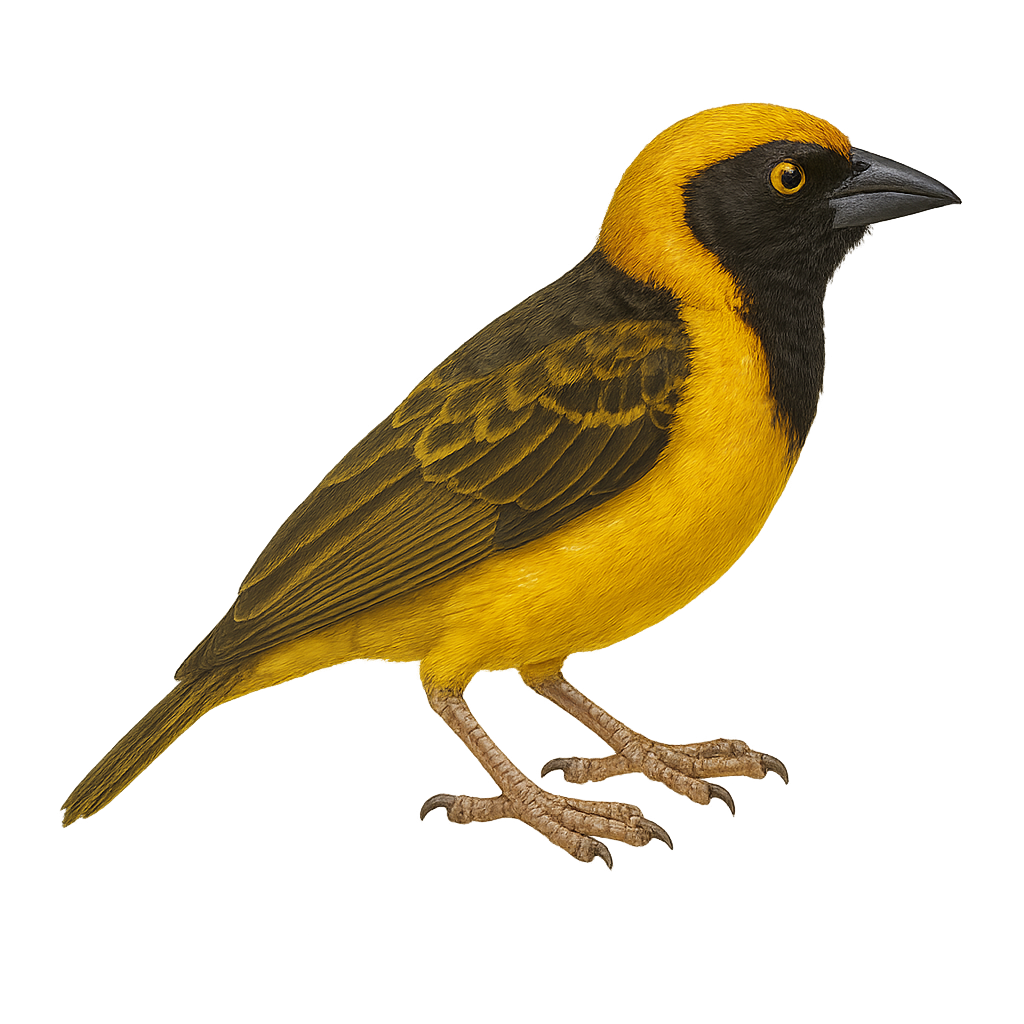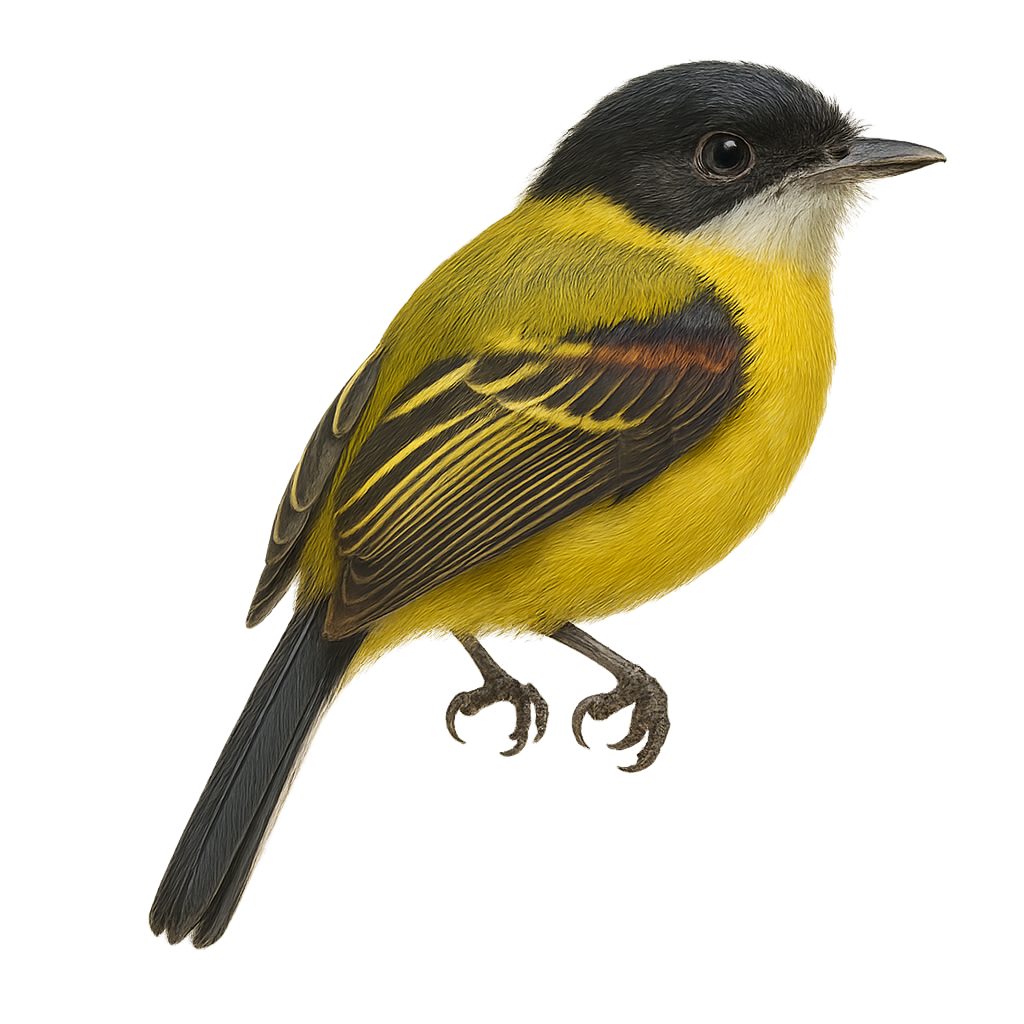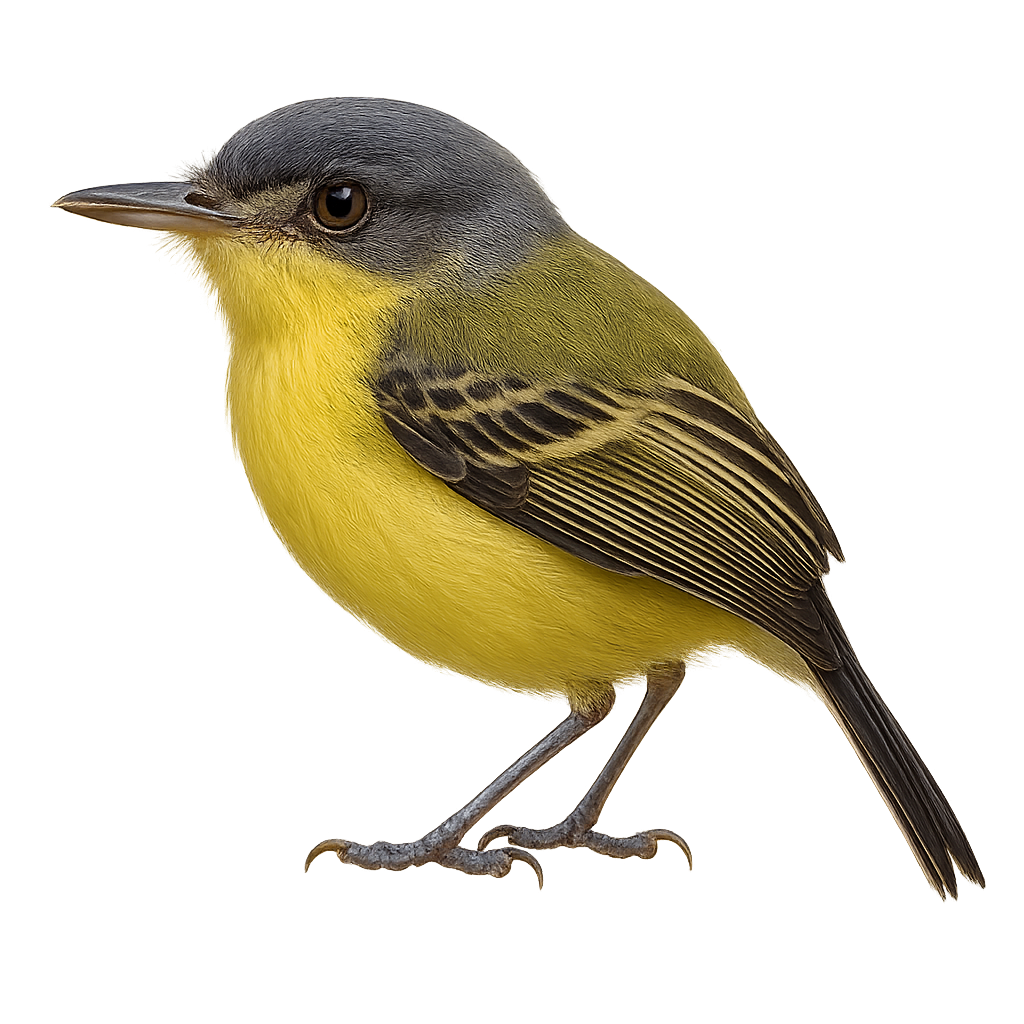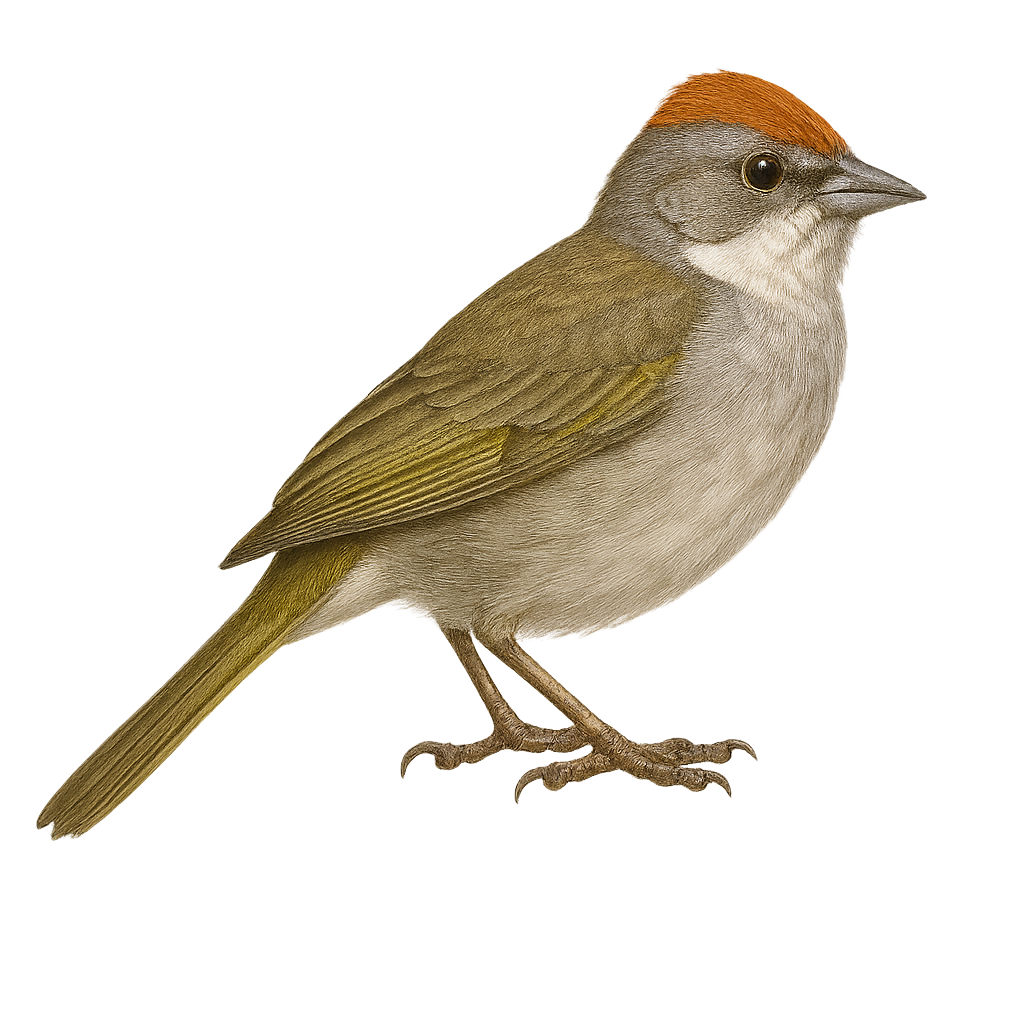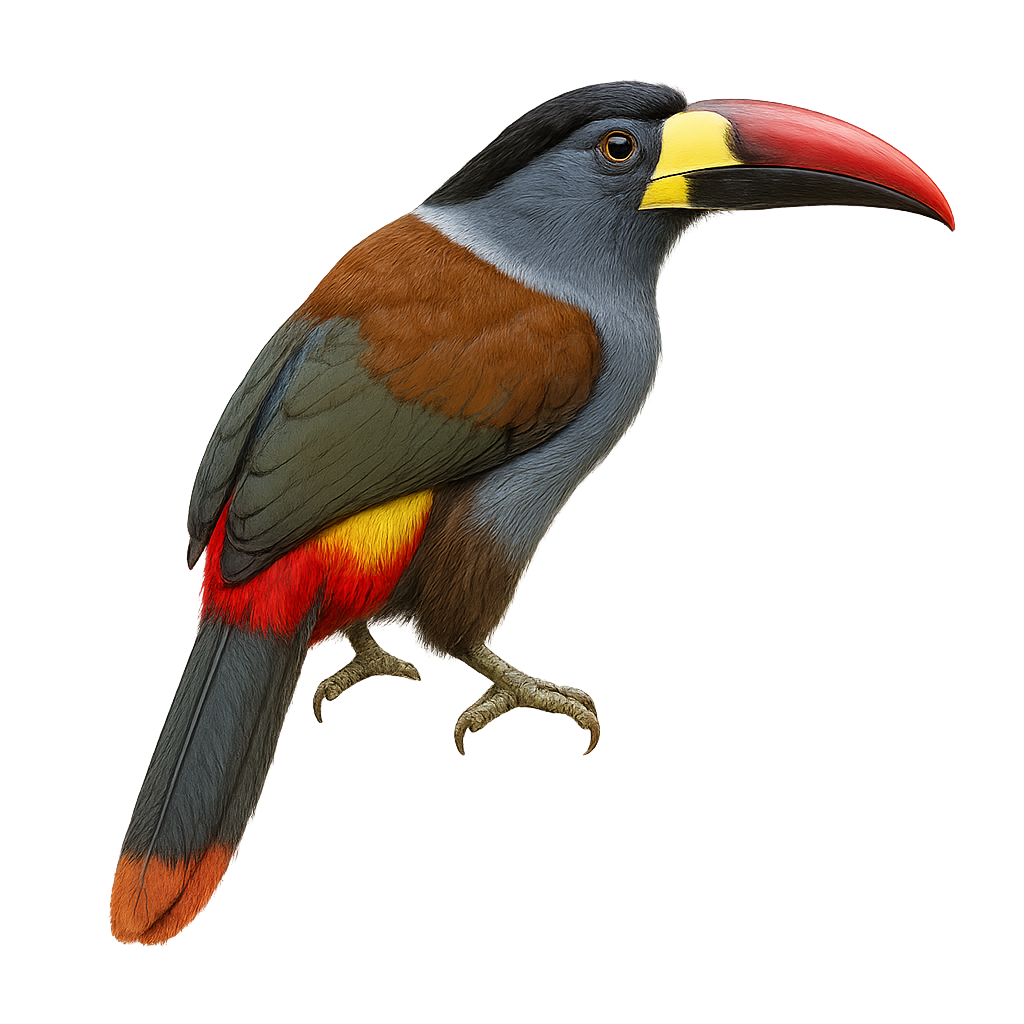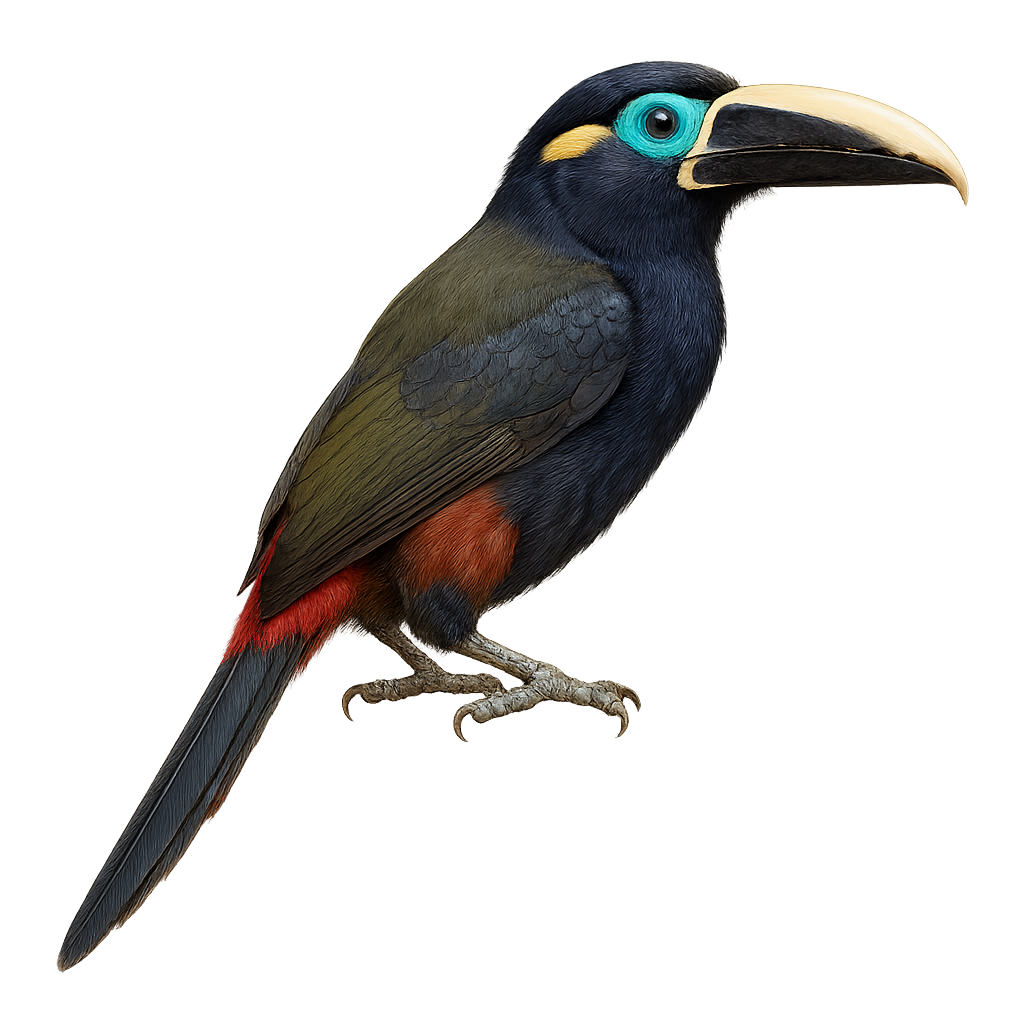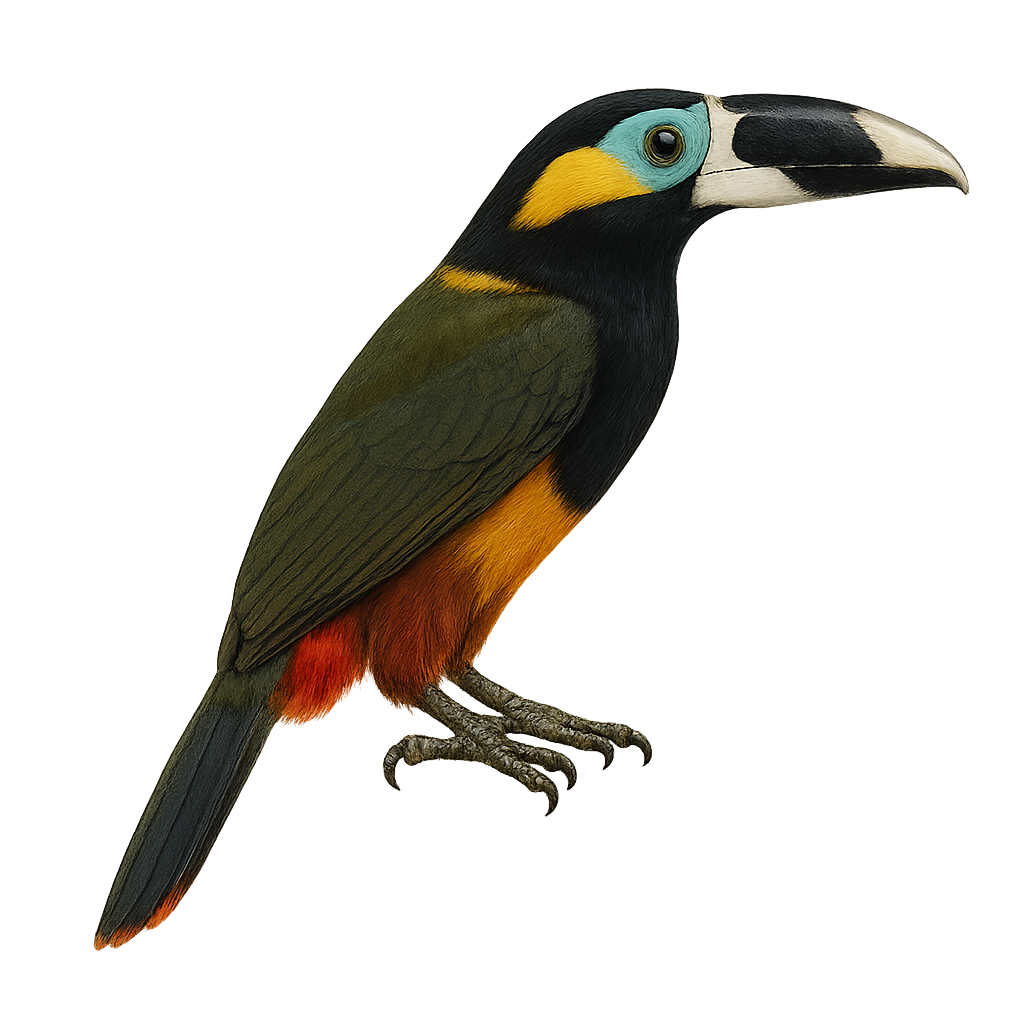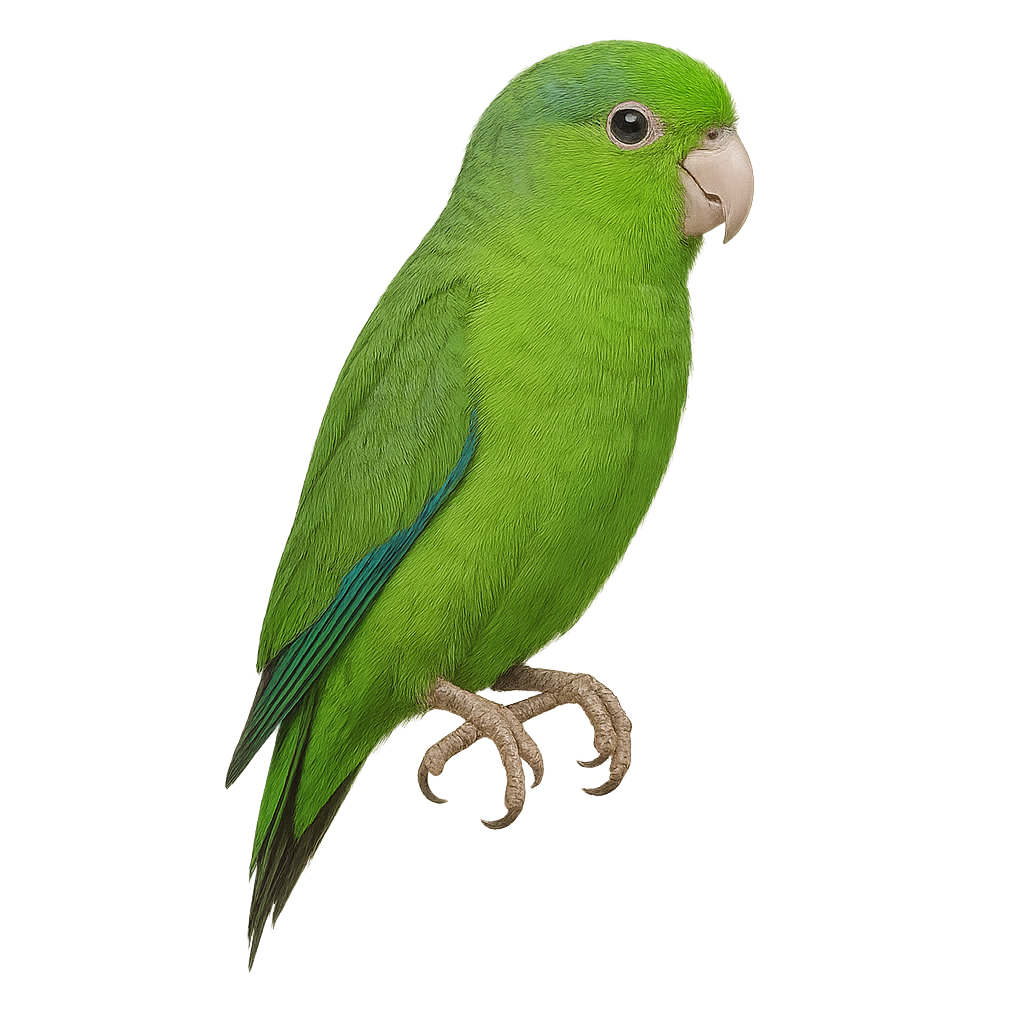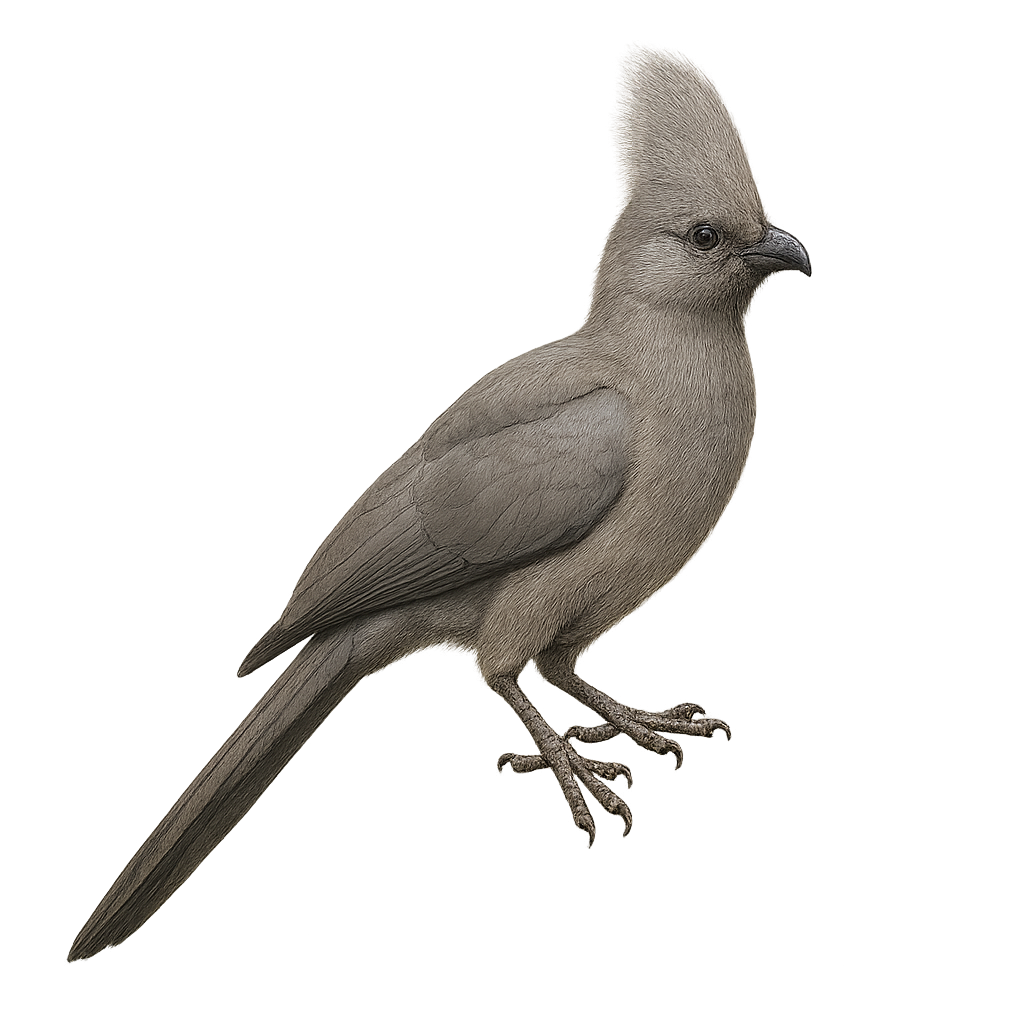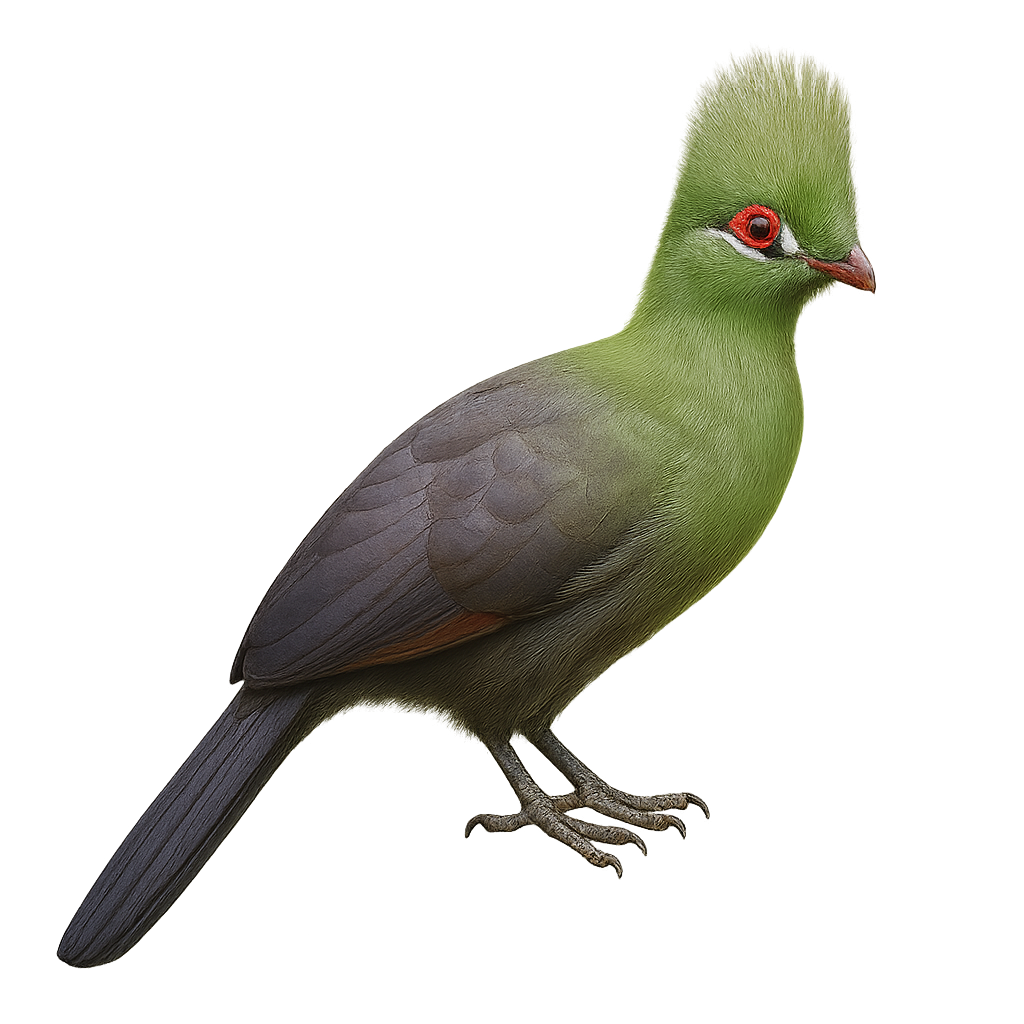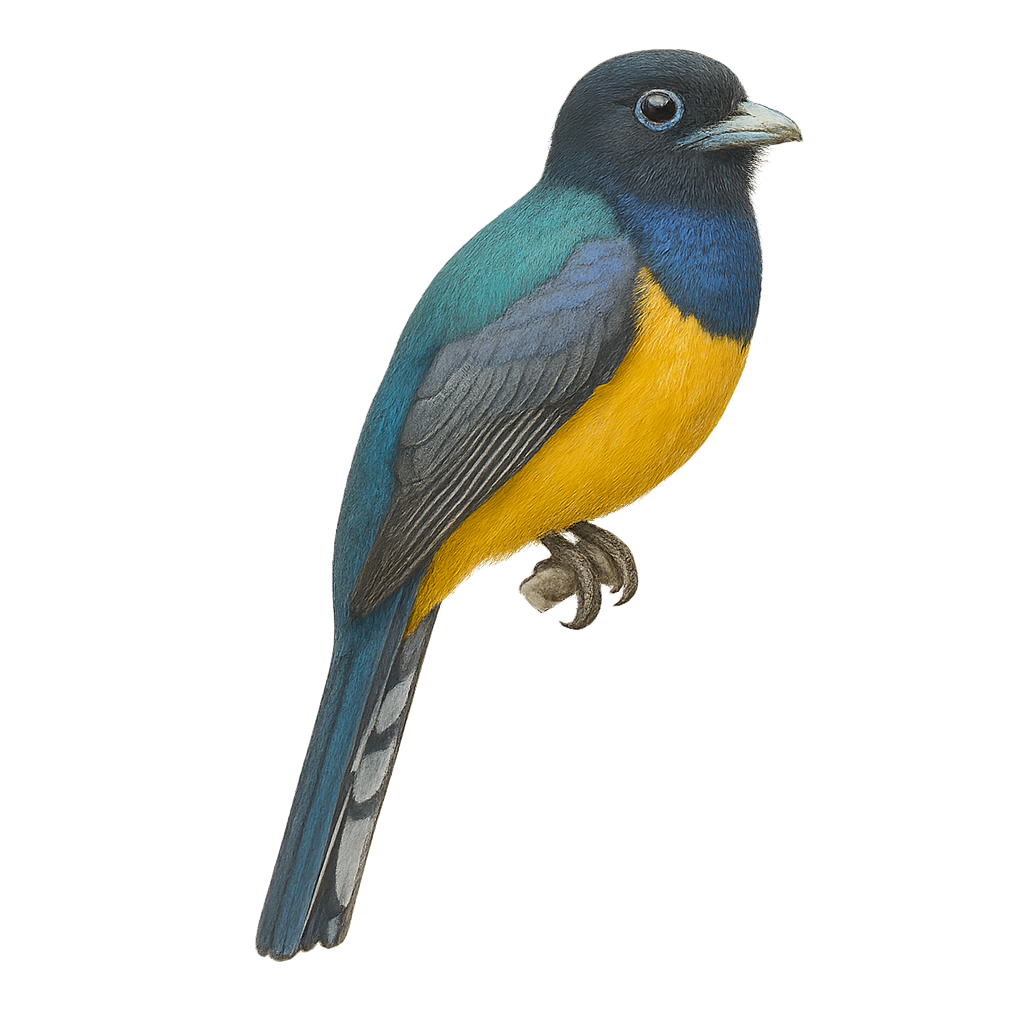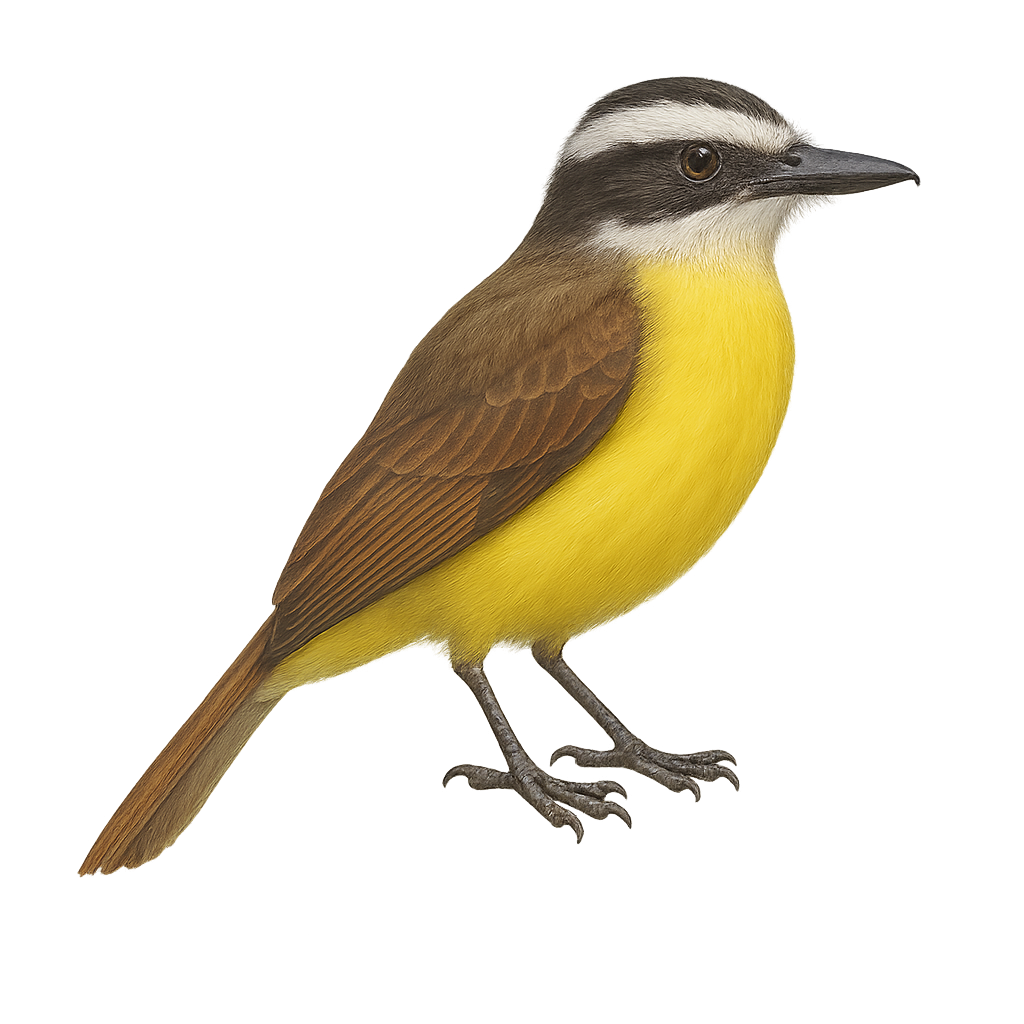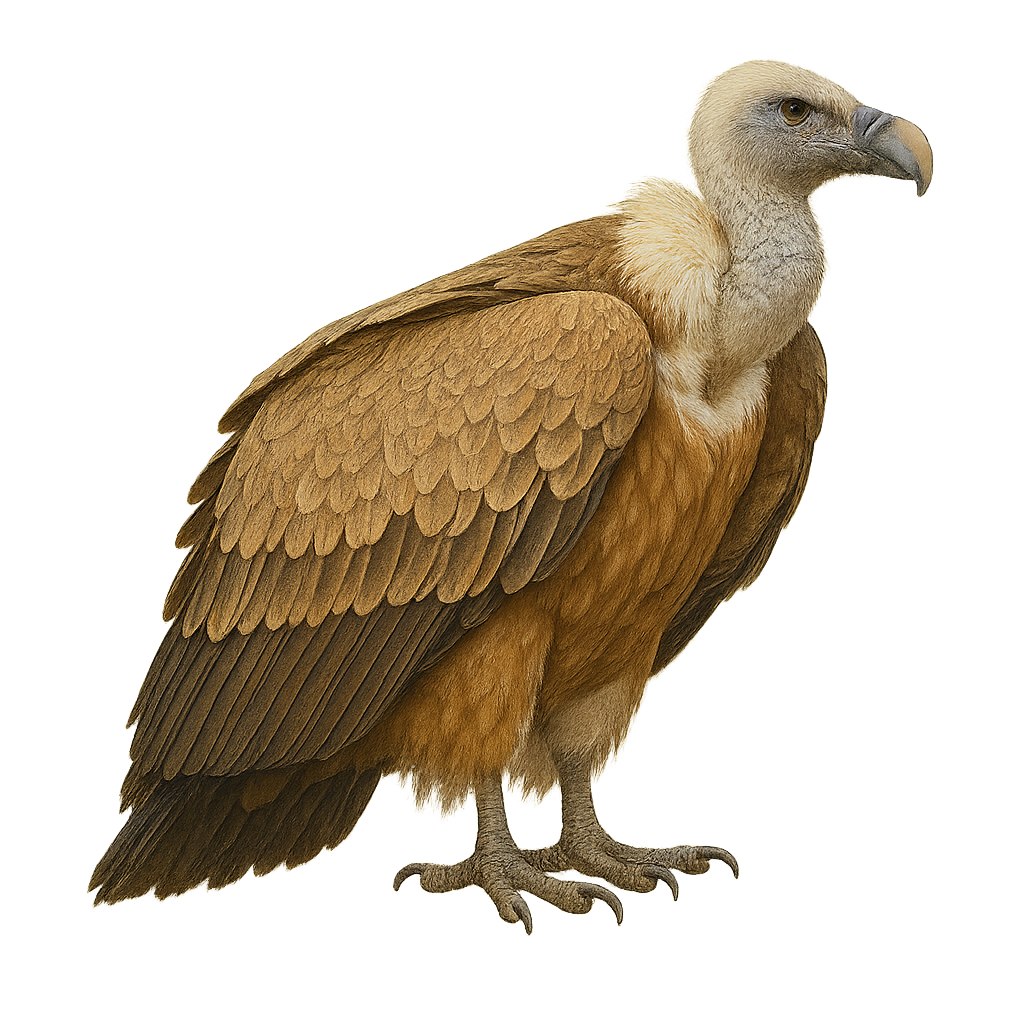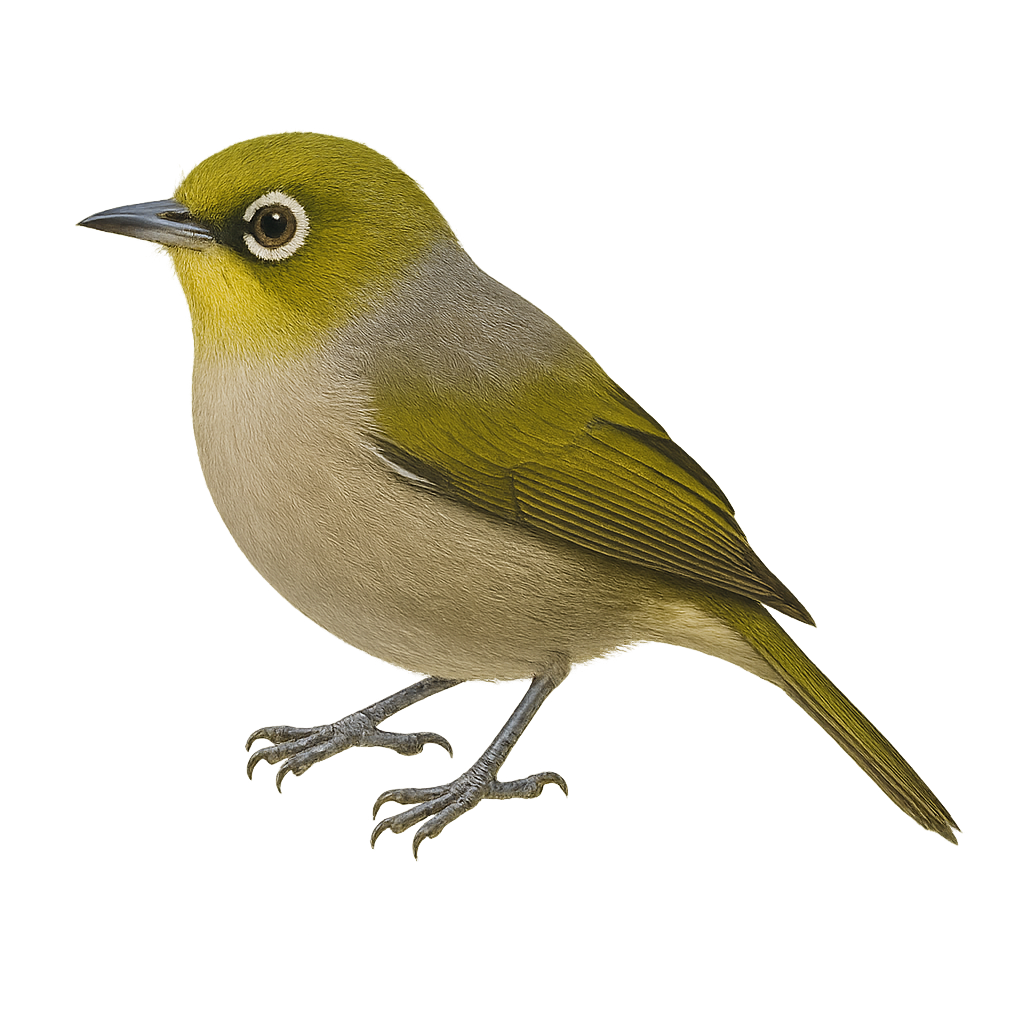The Green-winged Saltator is a medium-sized bird primarily found in the forests and wooded areas of South America. It is easily recognizable by its olive-green plumage and slightly darker wings. Its robust beak is adapted for cracking seeds, although it also feeds on fruits and insects. The song of the Green-winged Saltator is melodious, often heard at dawn. This bird is generally solitary or seen in small groups. It is quite suspicious of humans, which can make observing it a challenge. Its ability to adapt to different habitats allows it to thrive in various environments.
The Garganey is a small dabbling duck measuring between 37 and 41 cm in length with a wingspan of 59 to 67 cm. The breeding male is characterized by a broad white crescent over a reddish-brown head, finely vermiculated gray flanks, and gray-blue scapulars. The female has a cryptic brown-beige plumage with three longitudinal facial stripes. This species inhabits marshes, ponds, and floodplain meadows rich in aquatic vegetation, generally avoiding brackish waters. It feeds mainly on seeds, aquatic plants, mollusks, insects, and small crustaceans. Strictly migratory, it breeds in Europe and western Asia, wintering in sub-Saharan Africa, India, and Southeast Asia. Although listed as Least Concern by the IUCN, it is locally vulnerable due to the loss of wetland habitats.
The Green-backed Twinspot, Mandingoa nitidula, is a small exotic bird belonging to the Estrildidae family. Native to the tropical forests of Central and East Africa, this bird is particularly admired for its bright plumage and distinctive patterns. Males display a bright green head, contrasting with a body speckled with white spots on a black background. Females, on the other hand, have more subdued colors, predominantly olive green. These birds measure about 10 cm in length and weigh between 9 and 12 grams. They are often seen in small groups, feeding mainly on seeds and insects. Their melodious song and social behavior make them fascinating subjects of study for ornithologists and bird enthusiasts.
The Grassland Yellow-Finch, or Sicalis luteola, is a small passerine bird belonging to the Thraupidae family. It is primarily found in open and semi-open regions of South America, such as savannas, grasslands, and agricultural areas. This bird is notable for its bright yellow plumage, especially in males, while females display duller tones. The Grassland Yellow-Finch is a gregarious bird, often seen in flocks, particularly outside the breeding season. Its song is melodious and varied, making it popular among birdwatchers. Although common within its range, it is sensitive to environmental changes, especially habitat destruction.
The Green Sunbird, or Anthreptes rectirostris, is a small, colorful bird from the Nectariniidae family, primarily found in West and Central Africa. It is distinguished by its vibrant plumage, often metallic green in males, and its slender, straight bill adapted for nectar feeding. This nectarivore is commonly seen in tropical rainforests, forest edges, and occasionally in gardens. Its song is a mix of trills and melodious chirps. Although primarily nectarivorous, it supplements its diet with insects, especially during the breeding season. The Green Sunbird plays a crucial role in plant pollination, thus contributing to the biodiversity of its habitat.
The Grass-green Tanager, or Chlorornis riefferii, is a vibrant and fascinating bird primarily found in the humid forests of the Andes. With its bright green plumage, it is distinguished by a reddish head and a robust beak. This bird measures about 20 cm in length and feeds mainly on fruits, insects, and nectar. It is often seen in small groups, moving nimbly through dense foliage. Although its habitat is relatively stable, deforestation poses a potential threat. The Grass-green Tanager is a symbol of Andean biodiversity and plays a crucial role in seed dispersal, contributing to the health of its ecosystem.
The Guira Tanager is a small, colorful bird primarily found in South America, particularly in Brazil, Argentina, and Paraguay. It is easily recognizable by its vibrant plumage, featuring shades of bright yellow, black, and white. Males and females exhibit differences in coloration, with males generally being more vivid. This tanager inhabits tropical rainforests, forest edges, and sometimes open wooded areas. It feeds mainly on fruits, insects, and nectar, playing a significant role in seed dispersal and pollination. The Guira Tanager is a sociable bird, often seen in small groups or pairs, and is known for its melodious and varied songs.
The Golden-collared Honeycreeper, or Iridophanes pulcherrimus, is a small, striking bird from South American montane forests, with vibrant plumage combining bright blue, vivid yellow, and deep black. It inhabits forest edges, shrubby zones, and cloud forests from Venezuela to northern Bolivia. Feeding on fruits, nectar, and insects, it often joins mixed-species flocks in the canopy. Energetic and colorful, it is a favorite among birdwatchers and nature photographers. Its population is currently considered stable.
The Greater Prairie-Chicken, or Tympanuchus cupido, is a notable bird of the North American Great Plains. Known for its brown and white plumage, it is famous for its elaborate courtship displays where males inflate their orange air sacs and produce deep booming sounds to attract females. These birds primarily inhabit open prairies, feeding on seeds, insects, and small fruits. Unfortunately, their habitat is threatened by intensive agriculture and urbanization, leading to a significant population decline. Conservation efforts focus on protecting and restoring their natural habitats to ensure their long-term survival.
The Ploceus grandis, or Giant Weaver, is a bird from the Ploceidae family, renowned for its nest-weaving skills. It features bright yellow plumage with brown hues on its wings and tail. Its head is adorned with a distinctive black mask, contrasting with its sturdy, conical beak. This social bird lives in colonies and is often found in the savannas and wooded areas of sub-Saharan Africa. It primarily feeds on seeds, insects, and small fruits. The Giant Weaver is also known for its melodious songs and elaborate courtship displays. Although widespread, it sometimes faces threats from habitat loss.
The Golden-winged Tody-Flycatcher, Poecilotriccus calopterus, is a small bird from the Tyrannidae family. It is notable for its golden-winged feathers and primarily olive-green plumage. This bird inhabits humid forests and wooded areas in South America, particularly in Colombia, Ecuador, and Peru. Often seen in pairs or small groups, it feeds on insects caught in flight. Its modest size and discreet behavior can make it difficult to spot. Although its habitat is threatened by deforestation, it is currently listed as "Least Concern" by the IUCN.
The Greenish Tyrannulet, Todirostrum viridanum, is a small bird from the Tyrannidae family, primarily found in the humid forests and wooded areas of Central America. This passerine is distinguished by its olive-green plumage, dark wings, and lighter belly. It is often seen foraging for insects in dense foliage, using its short, broad bill to catch prey. Although discreet, its high-pitched, repetitive song makes it identifiable. The Greenish Tyrannulet plays a crucial role in the ecosystem by regulating insect populations and aiding in seed dispersal. Its adaptability to various habitats allows it to survive despite increasing deforestation.
The Grünschwanz-Grundammer is a medium-sized bird, measuring about 18 to 20 cm in length. It is easily recognizable by its olive-green back, gray chest, and distinctive rufous crown. This bird prefers shrubby habitats and dense undergrowth, often in mountainous regions of western North America. It is primarily granivorous but also consumes insects, especially during the breeding season. The Grünschwanz-Grundammer is a discreet bird, often heard before seen, thanks to its melodious song and distinctive calls. Although generally solitary, it can be observed in small groups during migration.
The Gray-breasted Mountain-Toucan, Andigena hypoglauca, is a captivating bird of the Andes, known for its colorful plumage and distinctive bill. It features a gray breast, contrasting with its vividly colored wings and head. This bird primarily inhabits humid montane forests, feeding on fruits, insects, and occasionally small vertebrates. Its ecological role is vital, especially in seed dispersal. Although its habitat is relatively stable, deforestation poses a potential threat. The mountain toucan is a social bird, often seen in small groups, emitting loud calls for communication.
The Gould's Toucanet, or Selenidera spectabilis, is a colorful and fascinating bird belonging to the Ramphastidae family. It is distinguished by its vibrant plumage, featuring shades of green, blue, and yellow, as well as its large, multicolored beak. This toucanet primarily inhabits the humid tropical forests of Central America, notably in Honduras, Nicaragua, and Costa Rica. It is often observed in small groups, feeding on fruits, insects, and occasionally small vertebrates. Although its conservation status is currently considered "least concern," deforestation and habitat loss pose potential threats to its population.
The Gould's Toucanet, or Selenidera gouldii, is a colorful and fascinating bird primarily inhabiting the humid tropical forests of South America, particularly in Brazil. This small toucan is distinguished by its vibrant plumage, blending shades of green, blue, and yellow, with a characteristic banana-shaped bill. It measures about 30 to 35 cm in length and weighs between 130 and 160 grams. Arboreal, it primarily feeds on fruits but also consumes insects and small vertebrates. Its call is a mix of whistles and clicks, often heard at dawn and dusk. The Gould's Toucanet is a social bird, living in small family groups.
The Golden-collared Toucanet, or Selenidera reinwardtii, is a captivating bird found in the tropical rainforests of South America. It is distinguished by its vibrant plumage, featuring a bright yellow chest contrasted with green wings and a prominent beak. Measuring about 35 cm, it belongs to the Ramphastidae family. This bird is primarily frugivorous but also feeds on insects and small vertebrates. It plays a crucial role in seed dispersal, aiding forest regeneration. The Golden-collared Toucanet is often seen in small groups, emitting loud calls for communication. Although relatively tolerant of human presence, respecting its natural habitat is essential for its survival.
The Green-rumped Parrotlet is a small parrot native to South America, measuring about 12 cm in length. It is predominantly green, with blue tinges on the wings and head in males. Females are generally more uniform in color. This parrot inhabits tropical forests, savannas, and agricultural areas. It is social, often living in groups. Its diet consists of seeds, fruits, and flowers. Although quite common, it is threatened by habitat loss and illegal trade. Its ability to adapt to various environments allows it to survive in disturbed areas.
The Grey Go-away-bird, or Crinifer concolor, is a medium-sized African bird known for its uniform grey plumage and distinctive crest. It measures about 50 cm in length and weighs between 200 and 300 grams. This bird is often seen in small groups, moving nimbly through trees. It is famous for its distinctive call that sounds like "go-away," hence its English name. The Grey Go-away-bird primarily feeds on fruits but also consumes leaves, flowers, and occasionally insects. It is widely distributed in the savannas and open woodlands of sub-Saharan Africa.
The Guinea Turaco, or Tauraco persa, is a striking bird known for its vibrant plumage and distinctive crest. Native to the forests of West Africa, it is characterized by its bright colors, particularly the emerald green body and vivid red wings visible in flight. Measuring about 40 cm in length, it has a short, strong beak, ideal for feeding on fruits, flowers, and leaves. Social in nature, it often lives in small groups and communicates with loud calls. Although primarily arboreal, it occasionally descends to the ground to forage. Its ability to move nimbly through trees is aided by its zygodactyl feet, allowing it to grip branches securely.
The Green-backed Trogon, or Trogon viridis, is a colorful bird found in the tropical forests of South America, particularly in the Amazon. It is distinguished by its vibrant plumage, with a bright green back, yellow belly, and black chest. Males have a blue-black head with a yellow eye-ring, while females have duller tones. This bird measures about 28 to 30 cm in length and feeds mainly on insects and fruits. It is often seen perched motionless, patiently waiting for its prey. The Green-backed Trogon is a sedentary bird, preferring dense forests where it can effectively camouflage itself with its plumage.
The Gartered Trogon, or Trogon caligatus, is a colorful bird found in the tropical forests of Central America. It is notable for its vibrant plumage, with an emerald green back and bright red chest. As its name suggests, its tail is black with white bands. This bird measures about 28 to 30 cm in length and primarily feeds on insects and fruits. It is often seen perched silently in the canopy, moving gracefully between branches. Although relatively tolerant of human presence, it prefers dense wooded areas where it can easily hide. Its breeding season varies by region, but it typically nests in tree cavities.
The Great Crested Flycatcher, Myiarchus crinitus, is a medium-sized bird belonging to the Tyrannidae family. It is easily recognizable by its distinctive crest and olive-brown plumage on the back, contrasting with a bright yellow belly. The wings and tail have rufous tones. This bird is primarily insectivorous, catching its prey in flight or gleaning them from branches. It inhabits open forests, edges, and wooded areas. During the breeding season, it nests in natural cavities or nest boxes. The song of the Great Crested Flycatcher is a clear, melodious whistle, often heard in spring. Although widespread in North America, it migrates to Central America and northern South America for the winter.
The Great Kiskadee is a medium-sized bird, easily recognizable by its bright yellow belly and head adorned with a white and black stripe. It has a sturdy black beak, suited to its varied diet that includes insects, fruits, and small vertebrates. This bird is often seen in open areas, gardens, and light forests, where it perches on exposed branches to monitor its territory. Its distinctive call, resembling its name, is often heard throughout its range, which extends from the southern United States to Argentina. The Great Kiskadee is a social bird, often seen in pairs or small groups, and is known for its boldness against predators.
The Golden-faced Tyrannulet, scientifically known as Zimmerius chrysops, is a small passerine bird belonging to the Tyrannidae family. It is primarily found in the humid forests of the Andes, where it is distinguished by its characteristic golden face and olive-green plumage. This small bird is often seen feeding on insects and fruits in the canopy. Although discreet, its high-pitched and repetitive song makes it easy to spot. The Golden-faced Tyrannulet plays an important role in the ecosystem by participating in seed dispersal and controlling insect populations. Its presence is an indicator of the health of Andean forests.
The Gualaquiza Tyrannulet, or Phylloscartes gualaquizae, is a small passerine bird belonging to the Tyrannidae family. It is primarily found in the humid montane forests of Ecuador and Peru. This bird is characterized by its olive-green plumage and distinctive facial markings. Often seen foraging for insects among dense foliage, it is discreet but can be identified by its melodious song. While its population is currently stable, deforestation poses a potential threat to its natural habitat. Preserving these ecosystems is crucial for the survival of this unique species.
The Griffon Vulture is a large bird of prey found primarily in the mountains, hills, and rocky areas of Europe, Asia, and North Africa. It typically measures between 93 and 110 cm in length, with a wingspan of 2.5 to 2.8 meters, and weighs between 6 and 12 kg. Its plumage is mainly light brown, with white feathers around its neck and head, and a large area of bare skin on the neck. The Griffon Vulture is a scavenger, primarily feeding on animal carcasses. It plays a crucial role in the ecosystem by cleaning up carcasses and preventing the spread of diseases. While its population has declined in some regions, the Griffon Vulture benefits from conservation programs, but it remains threatened by habitat loss, illegal hunting, and poisoning.
The Golden-fronted Leafbird, Chloropsis aurifrons, is a vibrant and fascinating bird native to the tropical forests of Southeast Asia. It is distinguished by its bright green plumage, golden head, and black mask around the eyes. Measuring about 17 to 20 cm, this bird has a slender, slightly curved beak, perfect for feeding on nectar, fruits, and insects. Males and females have similar colors, although females are slightly duller. The Golden-fronted Leafbird is often seen in small groups, moving nimbly through dense foliage. It is known for its melodious and varied song, which resonates in the forests it inhabits.
The Zosterops lateralis, commonly known as the Grey White-eye, is a small passerine bird with predominantly olive-green plumage and greyish underparts. It is easily identifiable by its distinctive white eye-ring. Native to Pacific islands, particularly New Caledonia, this bird is often seen in active flocks, feeding mainly on insects and nectar. It plays a crucial role in pollinating local plants. Although generally discreet, its melodious and repetitive song can be heard in forests and gardens. Its ability to adapt to various habitats, including urban areas, makes it resilient to environmental changes.





